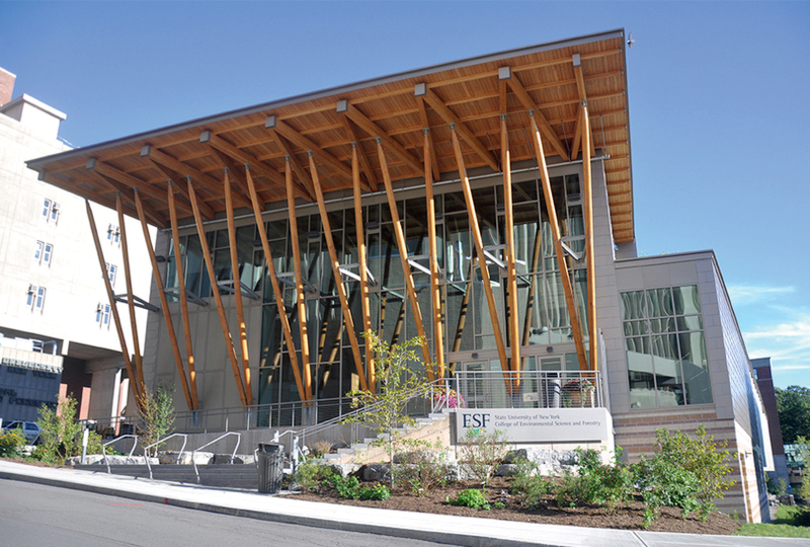Roosevelt Wild Life Collection receives antelope donation from SU alumnus

Margaret Lin | Staff Photographer
Paul Haczela, a Class of 1957 SU alumnus, has donated a couple dozen animal specimens, some of which are located in the taxidermy display in the Gateway Building on the SUNY-ESF campus.
The Roosevelt Wild Life Collection at SUNY-ESF, which features many different animal specimen, recently received a full-mounted sable antelope as a donation from a Syracuse University alumnus.
The collection, created in 1919 as a part of the Roosevelt Wild Life Experimental Station, is located in SU’s Lyman Hall even though it is a part of the State University of New York College of Environmental Science and Forestry.
Paul Haczela, a Class of 1957 SU alumnus, has donated a couple dozen specimens, some of which are located in the Gateway Building, said Ron Giegerich, an instructional support specialist in the Department of Environmental and Forest Biology who has been working as curator and manager of the collection for 38 years.
Haczela’s most recent donation is a sable antelope, which he collected from a ranch in South Africa because it was breeding with its sisters, according to a SUNY-ESF Office of Communications release.
The alumnus has traveled and hunted all over the world, in places like New Zealand, Russia, Alaska, Botswana and Zimbabwe, according to the release.
The collection, which is named after former President Theodore Roosevelt, will celebrate its 100th anniversary in a few years, has received some very significant donations over the course of time — some dating back to the early 1900s. It has accumulated more than 1,600 bird specimens collected over 100 years and continues to get donations on a regular basis. Each of these donations has details on when, where and who collected the specimen.
In addition to the sable antelope, Giegerich said another significant piece of the collection that was donated by an SU alumnus came in 2000 when George Finck, a Class of 1955 SU graduate, donated a passenger pigeon to the college.
Giegerich said the pigeon donation was significant because this breed of pigeon went extinct in 1914.
“It’s important because there have been great strides in conservation so what happened to the passenger pigeon won’t happen again,” Giegerich said.
Giegerich, a graduate of both SU and SUNY-ESF, worked in the Fish and Wildlife Service mammal division at the Smithsonian Institution in Washington, D.C., which got him interested in museum work. By chance, a job opened up at SUNY-ESF when he was very young and he has been working at the collection ever since.
Giegerich said one of the things that has brought him great satisfaction is that he has been able to acquire for the college a lot of different specimens. He added that another neat experience has been his interactions with students.
Through his work, Giegerich has taught students museum techniques — how to preserve specimens, how to care for a museum and what data they need to collect to make a viable scientific specimen.
“Student interaction has been very key and very rewarding,” Giegerich said.
Several courses are taught using materials provided by the Roosevelt Wild Life Collection: an ichthyology course about fish, an ornithology course studying birds, an etymology course on mammals and a herpetology course on amphibians and reptiles. All these specimens and species are housed in the collection, Giegerich said.
The Roosevelt Wild Life Collection hit a lull in the 1950s, Giegerich said, and was absorbed into the Zoology Department of SUNY-ESF before being reinstated in 1999 by former New York state Gov. George Pataki. The collection is thriving now, Giegerich said.
“It is important to know that we are strong and moving forward,” he said.




